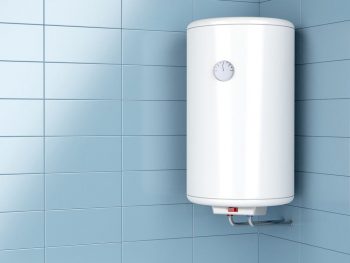
In the world of electricity, two types of current reign supreme: AC (alternating current) and DC (direct current). Both have their uses and benefits, but AC is generally considered more efficient than DC. But why is this the case? This comprehensive article will delve into the intricacies of AC and DC, exploring the reasons behind AC’s superior efficiency, and the circumstances under which DC might be a better choice.
AC (Alternating Current) is generally considered more efficient than DC (Direct Current) primarily because of its ability to be easily transformed into higher or lower voltages, which is crucial for efficient power distribution and minimizing energy losses during transmission and consumption. AC also has a wider range of applications, and most power plants generate AC electricity. However, DC can be more efficient in certain situations, such as in DC motors and long-distance power transmission.
The Basic Differences Between AC and DC
Before we can fully understand why AC is more efficient than DC, we need to grasp the basic differences between the two.
- Direction of Electron Flow: In DC, electrons flow steadily in a single direction, while in AC, electrons keep switching directions, going forward and then backward.
- Voltage Behavior: DC maintains a constant voltage, whereas in AC, the voltage periodically changes from positive to negative and vice versa.
- Waveform: AC can be represented by a sine wave, which is a curved line that represents electric cycles measured in Hertz (Hz). On the other hand, DC voltage remains constant and does not exhibit a waveform like AC.
- Generation: DC is obtained from sources like batteries, solar cells, and fuel cells, while AC is generated by spinning a wire loop inside a magnetic field, typically in power plants using alternators.
- Applications: AC is the most commonly used and preferred electric power for household equipment, offices, and buildings. DC is used in most digital electronics and can be stored in batteries.
- Transmission: AC is the best way to transmit electricity over large distances because it can be easily transformed to different voltage levels using transformers. DC voltage cannot travel very far as it begins to lose energy.
AC’s Efficiency in Power Transmission
One of the main factors that contribute to AC’s efficiency over DC is its ability to be easily transformed into higher or lower voltages. This is crucial for efficient power distribution and minimizing energy losses during transmission and consumption.
Transformers are used to step up or step down the voltage levels in AC systems. The process of stepping up or down the voltage in AC systems is based on electromagnetic induction, a phenomenon that is highly efficient, with some transformers reaching up to 99% efficiency.
When it comes to long-distance power transmission, high-voltage direct current (HVDC) systems are more efficient than AC systems. HVDC systems have several advantages over AC systems for long-distance transmission. They have lower line losses, no need for reactive power, and fully controllable power flow. HVDC transmission losses are quoted at 3.5% per 1,000 km (620 mi), which is about 50% less than AC (6.7%) lines at the same voltage levels.
However, most power plants generate AC electricity, and most electrical loads run on AC power. As a result, the majority of transmission lines carrying power around the world are of the AC type. AC power transmission is also cheaper and more efficient in voltage stepping using transformers.
The Skin Effect in AC Transmission Lines
The skin effect is a phenomenon that affects the efficiency of AC power transmission. It is defined as the tendency of an AC current to distribute unevenly over the cross-section of a conductor, resulting in increased effective resistance of the conductor.
As the frequency of the AC increases, the current flow becomes more concentrated near the surface, resulting in a smaller skin depth. This reduces the effective cross-sectional area of the conductor available for current flow, which increases the power losses in the form of heat. These losses occur due to the resistance of the power lines (I^2R) and reduce the efficiency of the transmission line.
When DC Might Be More Efficient Than AC
While AC is generally more efficient, there are some instances where DC may be the better choice.
DC motors, for example, can operate more efficiently than AC motors, with some DC HVAC motors being at least 50% more efficient than their AC counterparts. Over long distances, DC transmission can move more power with less electrical losses than an equivalent AC transmission line. For renewable energy integration, like solar and wind power, DC is inherently compatible and thus more efficient for integrating these sources into the power grid. Many modern electronic devices, such as computers and smartphones, require DC power for their operation.
Future Trends in AC and DC Efficiency
The future of AC and DC efficiency lies in technological advancements. Innovations like Variable Refrigerant Flow (VRF) systems, AI-based automated heating systems, Internet of Things (IoT) enabled HVAC systems, and advances in digital technologies and materials science could all potentially affect the efficiency of AC and DC systems.
In conclusion, while AC is generally more efficient due to its ability to be easily transformed into higher or lower voltages, DC has its own unique advantages. The choice between AC and DC ultimately depends on the specific requirements and context of the application.
Frequently Asked Questions
What is a transformer and how does it work?
A transformer is an electrical device that is used to increase or decrease the voltage of an alternating current (AC). It works on the principle of electromagnetic induction, where a change in the magnetic field within a coil of wire induces a voltage across the ends of the coil.
How does the skin effect impact power transmission?
The skin effect increases the effective resistance of the conductor in AC power transmission. As the AC frequency increases, the current tends to flow near the surface of the conductor, reducing the effective cross-sectional area for current flow. This leads to increased power losses in the form of heat, thereby reducing the efficiency of power transmission.
What are Variable Refrigerant Flow (VRF) systems?
Variable Refrigerant Flow (VRF) systems are a type of HVAC technology that uses refrigerant as the cooling and heating medium. These systems are capable of providing not only cooling but also heating simultaneously to different areas in a building with the need for only one outdoor unit. This makes them incredibly efficient and versatile.
What is the role of DC in renewable energy integration?
Renewable energy sources like solar panels and wind turbines generate DC (Direct Current). Hence, DC is inherently compatible and efficient for integrating these sources into the power grid. For instance, solar panels produce DC, which can be directly used or stored in batteries without the need for conversion to AC.












